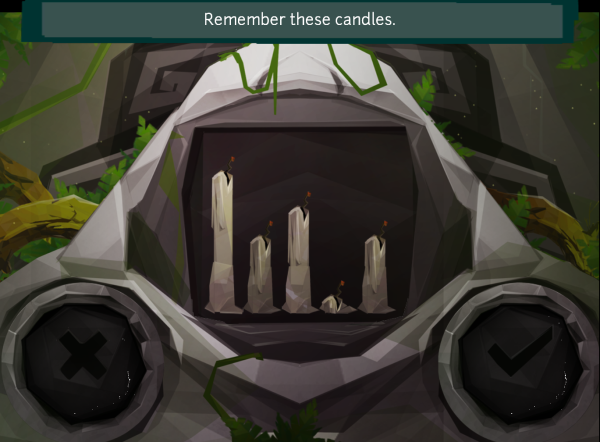

This test is used as an index of spatial processing ability and visual-spatial working memory. In this test, the player is shown an ancient tribal puzzle with four different length candles (4 bar histogram sample) for 4 seconds. This histogram moves away and a new histogram appears. This histogram is different from the stimulus histogram because it is rotated 90 degrees and may or may not match the previous histogram. The player must decide if the rotated image matches the stimulus histogram as quickly as possible. The histogram’s four bar heights are dynamically and randomly produced using code to ensure that players do not memorize the game.
This test combines visualization spatial orientation and visual memory. This skill combines the ability to generate, store, retrieve and transform visual images and sensations (CHC model), which are difficult to measure independent of one another.
Spatial processing ability.
Visual-spatial working memory, which is the ability to temporarily store and manipulate spatial information in memory.
Significant differences in spatial processing ability between individuals with TBI and control groups have been reported.1Cernich et al 2007, Bleiberg et al 1997 &1998